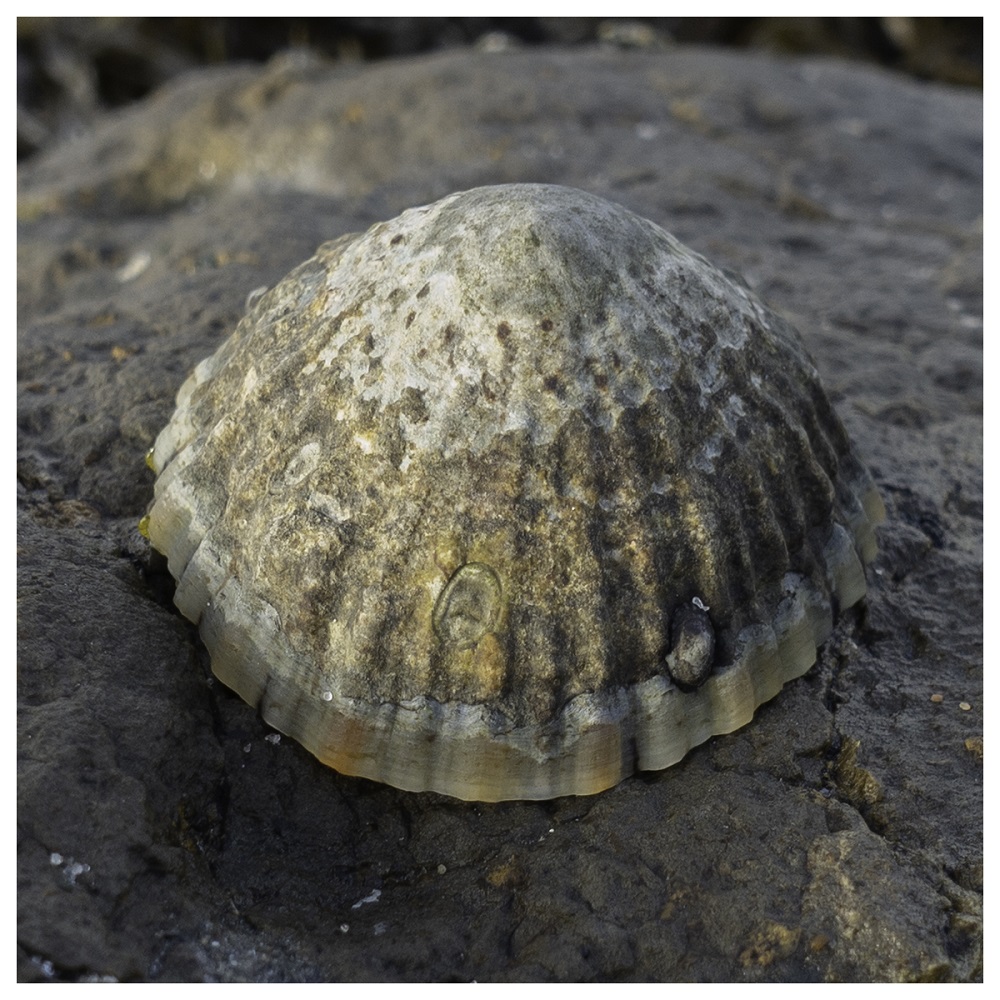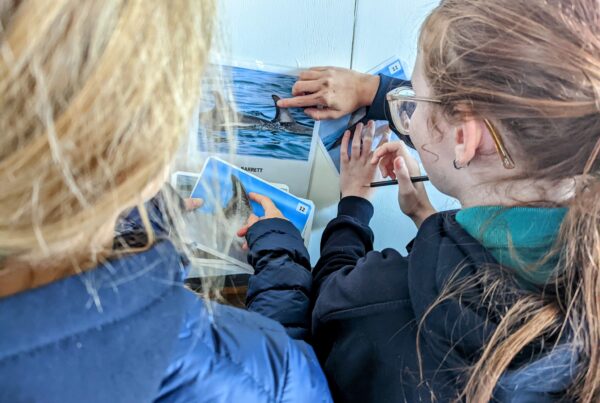And this creature is a……..
Did you guess correctly? This is a marine snail called the Variegated or Common Limpet and is easily recognised by its conical shell. They have an extraordinarily strong grip on the rock and are almost impossible to pick up. Limpets live on rocks that look bare, lacking seaweeds or other obvious food. We can’t see the microscopic algae that coats the surface of these rocks. Limpets feed on the algae and in doing so play a key role in the ecology of the rocky shore. Their grazing keeps the rocks clean of large algae and enables the larval stage of many animals that move from the plankton community to settle and mature on the rock surfaces.
As the rising tide covers the limpets, they start to move about feeding. When the tide starts to fall, the limpets follow their slime trail back to their starting point, their “home scar”. The scar is a patch of rock that has been worn down and shaped by the edges of the limpet’s shell and its rough tongue. This abrasion combined with new shell growth results in the shape of the shell closely matching the rock surface. The close fit improves the limpets grip on the rock, reducing the ability of predators to dislodge them and it also enables the limpet to trap water inside its shell as the tide falls. This water keeps its gills moist and replaces water lost while exposed to the sun and air during low tide.
Common Limpet shells vary in shape depending on where the limpet lives on the beach. Those living closer to the water’s edge, where wave action is strongest, have shells that are broad and flatter, giving the shell less resistance to the waves and a larger foot area to grip the rocks.
Higher up the beach where dehydration is a problem, the shells are taller with a smaller foot area. These limpets clamp their shells down on the rock surface to avoid dehydration and in doing so the shell-forming part of its body is retracted and pulled closer to the body, creating a taller rather than broader shell.
Despite all these adaptations for living on the rocky shore the mortality of limpets has been estimated at around 48%, either by starvation or predation. Each tide brings predators, birds at low tide, fish, crabs and sea stars at high tide. Starvation usually occurs during summer and autumn when the algae growth is greatly reduced.
Watch a limpet defend itself against a sea star. It can either run away or stand and fight. How does a limpet fight? Watch and see.

If you would like to learn more about the strange world of the limpet and the huge diversity of life that can be found in the shallows along our shorelines please contact Education Director Mandy Robertson on education@dolphinresearch.org.au







